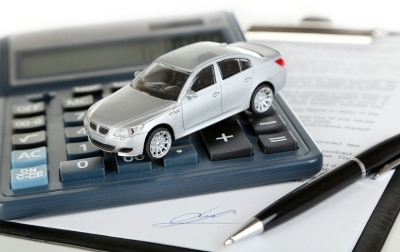When it comes to financing a car, a ton of individuals have doubts about the implications of a balloon payment. For starters, monthly payments can be reduced by using balloon payments. But it is crucial to evaluate the terms and conditions of any financial agreement to ensure that they are reasonable and appropriate for your situation. So to help you get your facts straight, this article will define a balloon payment, discuss how it works for cars, and help you decide if balloon payments are right for you.
What Are Balloon Payments for Cars?
Automobile manufacturers are the most common providers of auto balloon loans, but banks, credit unions, and other financial institutions may also provide them. Balloon loans for home and business purposes, such as commercial mortgages and equipment financing, are also available. A balloon payment for cars or on an auto loan is similar to a lease in that it has lower monthly payments and a residual value at the end of the term, but there are some essential differences.
In the case of a car balloon loan, the lender establishes a schedule of smaller monthly payments that lead up to the balloon payment, also known as the lump-sum payment. This sum is usually in the thousands or even tens of thousands of dollars and is frequently around half the value of the car. A car balloon loan may make sense if you want a lower monthly payment and have a strategy for dealing with the large balloon payment at the end of the loan.
How Does a Balloon Payment Work?
Assume you purchased a $40,000 vehicle with a car loan term of 5 years and an interest rate of 4.67%. You and your lender agree on a balloon payment of 25% of the loan amount, or $10,000, for a $30,000 loan.
Without a balloon payment, this would result in a monthly loan repayment of $748.82. However, with a 25% balloon, the repayment is reduced to $600.53 monthly, saving nearly $150. In the meantime, this extra money could supplement the family budget, such as groceries, your mortgage or other bills, or your investments.
However, it is essential to note that you are unlikely to save money in the long run because you will still have to make the large balloon payment at the end with accumulated interest.
Where Can You Get a Car Loan With a Balloon Payment?
Banks and car finance companies rarely offer balloon payment car loans. Instead, most dealers provide balloon payments.
Why Do Banks Not Provide Balloon Payments?
Banks do not offer balloon payments because they are risky for customers; if you cannot repay, you either lose the car or the bank must take legal action against you. Banks want to avoid this hassle, but dealer and manufacturer financing includes it as a selling option.
The lower payment makes more borrowers eligible to buy a car, and the more down payment increases the money buyers are willing to spend on a car. It’s easy to become trapped if you only consider the monthly payment. Balloon payments are a ticking time bomb for some car owners.
Balloon Auto Loan vs. Traditional Auto Loan
#1. APR
Because balloon loans are more risky in general, the APR on a car balloon loan is typically slightly higher than the APR on a traditional car loan. As a result, finance charges will be slightly higher as well.
#2. Number of Payments
The balloon payment may be due as the final payment during the loan term or as a payoff after the loan term has expired.
In a 36-month loan, for example, the balloon payment could be the 36th or 37th payment after the full three-year term, depending on your contract. You could look for a longer or shorter term.
#3. Monthly Payments
Lower monthly payments are the primary benefit of balloon loans, but this does not imply that you will pay less overall; it is simply a different way to structure the loan.
#4. Balloon Payment
This amount is determined before signing the loan contract and is based on the balloon factor, which is the estimated percentage of the vehicle’s value at the end of the loan term. For example, if a new car is worth $24,000 today and is expected to be worth $15,000 in three years, the balloon factor is 62.5%.
Leases vs. Balloon Loans
Balloon loans are a middle ground between leasing and traditional financing. Balloon loans, like leasing, have lower monthly payments, but they can be complicated, especially if you cannot make the final payment. Leases usually have the most down monthly payments, followed by balloon loans and traditional loans. So, consider leasing a vehicle if the most down monthly payment matters.
The ownership of the vehicle is a significant distinction between a balloon loan and a lease. The dealer owns the car during the lease period, but you may have the option to purchase the vehicle at the end of the lease. When the balloon loan is paid off in full, like traditional financing, you own the car. As a result, a balloon loan usually does not include mileage or other common restrictions when leasing a car.
Balloon Payments on Cars: Benefits and Drawbacks
Balloon Payments on Cars: Benefits
The main benefit of including a balloon payment in your car loan is that it reduces your weekly, fortnightly, or monthly loan payments. This provides you with the following advantages:
- Making it simpler to incorporate your loan into your monthly budget and household expenses.
- Freeing up cash to put towards investments – the extra money put towards investments is known as ‘opportunity cost.’
- Allowing you time to save for the loan payment at the end of the term.
- Allowing you to pay off the balloon by selling or trading in the vehicle and using the proceeds for repayment, then taking out a new loan for a better, safer, or more technologically advanced car.
Balloon Payments on Cars: Drawbacks
There are some disadvantages to adding a balloon payment, primarily the lump sum you’ll have to pay at the end. Here are some things to think about if you’re considering a car loan with a balloon payment:
- The long-term cost of the loan is higher.
- You will have a hefty bill to pay at the end of your car loan term, which may catch you off guard if you forget about it. This could range from a few thousand dollars to many tens of thousands.
- Longer loan terms (five years versus three years) have lower maximum balloon payments.
Although this is true for any car loan, you must consider depreciation and how paying a lump sum compares to how much your car has depreciated if you decide to sell it or cannot afford the final loan repayment. The term ‘negative equity’ refers to owing more on a car than it is worth.
What happens to balloon payments when the loan term ends?
The balloon payment will kick in when your car loan expires, say after 3 or 5 years. You may be required to sell the vehicle if you cannot pay the full amount in cash.
You may end up owing more than you sell your car for, depending on how much it has depreciated and how much you owe as part of the final payment. As a result, longer loan terms frequently have lower maximum balloon percentages.
The average car on the road is 10.1 years old, according to the Australian Bureau of Statistics. So, once your loan term is up, you should keep your car for a few more years. On the other hand, paying off the balloon amount may present an opportunity to upgrade to a newer, safer, and more technologically advanced vehicle.
When Your Balloon Payment Is Due, What Are Your Options?
When your balloon payment becomes due, you have several options:
Make the Final Car Loan Repayment
The most obvious option is to pay off the remaining loan balance with your money, giving you complete vehicle ownership. This isn’t a popular option because balloon payments are typically large sums of money most people need to have lying around.
Sell the Vehicle
When your balloon payment is due, the most common option is to sell the vehicle. Selling the car will usually cover the balloon payment, after which you can buy a new car and apply for another loan.
Trade in Your Car
Trading in a vehicle is similar to selling it. You can, however, choose the new car you want, and your balloon payment will be applied to the purchase price.
Refinance
Some lenders will let you refinance the balloon payment to pay it in installments rather than in one lump sum. Of course, this effectively negates many of the benefits of the balloon feature, and you will almost certainly have to pay interest on the amount refinanced.
Who Stands to Gain the Most From a Balloon Payment?
Small businesses and sole proprietors who want to free up cashflow to invest in their business frequently use balloon payments. Similarly, balloon car loans suit people who like to upgrade their vehicles every few years. Motorists can typically repay their balloon payment by trading in their car and purchasing a new one (either through finance or cash).
Who Should Think About Balloon Payment Financing?
We’re cautious because there are few positive situations where balloon payments are financially prudent. We believe that taking out balloon financing to have lower repayments is only postponing the inevitable. At some point, you must pay the balance all at once.
However, some people may be in an unusual position where balloon payment financing makes sense. Balloon payment financing may be an option if you have the money set aside (and will not touch it) for the payoff. If you still own the car when the balloon payment is due, you can pay it off without financial difficulty. On the other hand, if you want to sell the car before the balloon payment is due you must pay off the remaining balance. The car sale proceeds are often used to pay off the balance.
How Do You Make a Balloon Payment Balance Payment?
The idea behind a balloon payment loan is that you make lower (mostly interest-only) payments monthly and then pay off the balance when it matures. You make a lump sum payment to satisfy the loan if you have saved money or already had it set aside. You keep the car and are the sole owner of it.
If you need more funds, you must apply to refinance the loan with a different lender. To pay off the balloon loan, you can apply for a secured loan (using your car as collateral) or an unsecured loan (no collateral). You’ll need a good credit score, a steady income, and proof that you can afford the loan.
If you meet the requirements, the new loan pays off the balloon loan, and you pay the new lender. This lengthens your loan and increases your interest costs. You will almost certainly have to pay loan arrangement fees. As a result, you will pay interest not only on the balloon loan but also on the new loan. For these reasons, balloon payments are frequently costly and risky (unless you have the necessary amount of money set aside to pay off the balance).
Balloon Payment Loan Alternatives
If a balloon loan doesn’t seem right for you (and it isn’t for many people), consider the following alternatives:
- Purchase a less expensive vehicle if you prefer lower monthly payments. A less expensive car will result in a more down payment. Balloon payment loans artificially reduce ongoing payments and encourage people to live beyond their means..
- Lease a car – If you don’t know how long you’ll keep a car or want to avoid a balloon payment, leasing a car is a popular option. More information can be found in our vehicle leasing guide. Leasing will result in lower payments.
- If you can’t commit to making your monthly payments on time, consider waiting until you can pay cash for a (used) car. This eliminates the risk of repossession associated with any secured car loan. More information can be found in our used car buying guide.
Is It a Good Idea to Take Out Balloon Payment Loans?
A balloon payment loan can make sense if you don’t have the money to put down right now but are confident that you will have it in a few years. These loans combine the low monthly payments of a lease with the ownership of a car. They do, however, come with risks — if you cannot make the balloon payment at the end of the loan, you will be placed in a difficult financial situation.
How Can You Avoid Taking Out a Balloon Payment Loan?
You can pay a downpayment (and arrange car financing), trade in, or pay in cash as an alternative to balloon payment financing. If you arrange financing, your money reduces your loan amount, lowering your monthly payments. While balloon payments are due at the end of a term, a down payment is paid in advance, eliminating the risk of needing more money for a balloon payment later. You will then be able to manage the ongoing repayments as they become due
Are Balloon Payments Fixed?
Yes, you will have a fixed interest rate and payment for the life of the loan. For example, if you have a 3-year balloon loan, your payments are fixed for three years. The remaining balance (plus interest) is due at the end of three years.
What Is the Best Way to Get Rid of a Balloon Payment?
A balloon payment is eliminated by paying it off in full at maturity. If you can’t, you can refinance the loan if you qualify. If you believe you will need to refinance, your credit history must be solid, and you must stabilize your income and keep your debts to a minimum to qualify for the new loan.
Is It Possible to Lose Your Car if You Fail to Make a Balloon Payment?
Yes, even if you make your payments throughout the term but cannot make your final balloon payment, the lender may repossess your vehicle. This is why balloon loans are hazardous unless you have the money set aside and want to earn the interest until the loan matures.
Is It Possible to Switch From a Balloon Payment to Monthly Car Finance Payments?
Yes, but if this is a risk, it’s better to arrange refinancing before a balloon payment is due.
Balloon Payments on Cars: Related Articles
- BEST EMAIL MARKETING FOR SMALL BUSINESS: Top 19 Picks
- Mortgage: Simple 2023 Guide for Beginners and all you need Updated!!!
- MORTGAGE BALLOON PAYMENT: Understanding How It Works
- Balloon Payments: How Do They Work?
- WHAT IS A BALLOON PAYMENT: Definition And How To Avoid It






